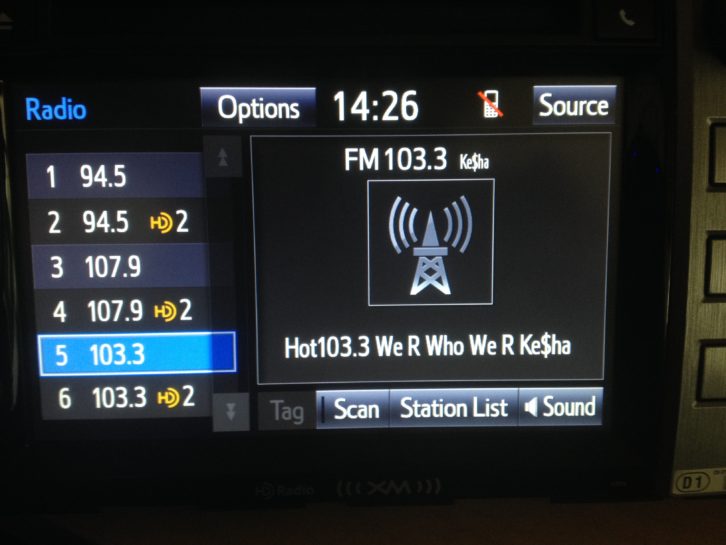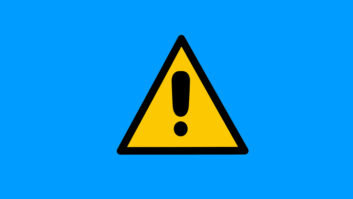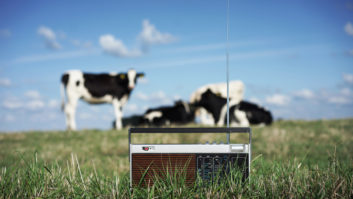If you are a reader of Radio World, you may have seen my series of articles regarding optimizing RDS displays over the past few years. While I have focused on implementation, I never communicated how this interest of mine came to be.
RDS was really a marriage of two interests in life, radio and computers. I was involved in the early 1990s with Bulletin Board Systems — a world that existed before the Internet that we know today came to be. I started as a user, later as a System Operator at age 13 no less, and that interest grew into participating in interconnecting BBSes into networks, and even delving into beta testing and programming for my preferred BBS Software, T.A.G.
I was “bit by the radio bug” around this same time. The Internet we know today would quickly end the world of BBSes, and I transitioned into the beginning of my radio engineering career. I started getting involved with RDS when it finally started to gain in popularity in the United States in the early 2000s.
Other broadcasters had started implementing the technology. Eventually my company became interested in doing some RDS deployments.
The building blocks of RDS and BBSes were really the same. Both used RS-232 serial connections to devices and used special command sequences to configure properly. Of course, RDS encoders produce a data stream that can be decoded by many radio receivers at the same time. So, I had the building blocks, computers, data links, and this new RDS encoder sitting on my bench.
At that point, I was learning RDS along the way, catching up with the groundwork many others had laid in the 1990s. I started like many engineers who get involved with new technologies, I took RDS encoders out of the box and started bench-testing them. I used the manual as my guide on how to set things up.
We eventually put stations on the air, and I would watch how what we were sending over the air appeared on receiver displays with RDS. If you ask my co-workers at the time, someone would get a new car with RDS and I’d ask to borrow their keys and be out in the parking lot watching, learning — and essentially adapting techniques used in the transmission of RDS to be most compatible and visually appealing across a range of receivers.

DIFFERENT RESULTS
One of the things that always perplexed me was that the U.S. dollar sign ($) often produced different results, depending on what radio receiver I used. Many stations just avoided its use altogether — which sometimes hurt efforts to monetize RDS to recoup the investment in the hardware and software required to transmit it. But the problem is, if you wanted to state a price point for an advertiser, the $ issue became a hindrance.
If you wanted to promote your own brand and talk about that $1,000 cash giveaway Monday morning at 7:20 a.m. — you really couldn’t do that effectively, either. While I may have picked up on a lot of tricks on how to optimize RDS displays, the dollar sign problem escaped me. It wasn’t until this series on RDS in Radio World started that some of the industry’s engineering leaders reached out to me to get involved in the National Radio Systems Committee.
Barry Thomas, then with Lincoln Financial Media, and Steve Davis of CCM+E said the NRSC was starting to work on a guideline document to pool together all the best ideas of RDS technologies from many different viewpoints into one document to be, in essence, as a guide for the station engineer taking that RDS encoder out of the box for the first time. I was intrigued and was happy to start participating in the meetings.

He noticed that the U.S. dollar sign or $ is denoted as 0x24 in hexadecimal format in ASCII but is a different value — 0xAB — in the RDS standard. Mike and I later did some field-testing using several RDS encoders and RDS receivers. Finally, we got to the bottom of this.
Around this same time, recording artist Ke$ha became frequently played on many stations, and her popularity also helped highlight this issue even further. The end result of our RDS research is in NRSC-G300 released Sept. 2012, Section 8.
If you are interested in learning more about this problem, the section covers RDS and character/font sets, and I encourage you to review them. As the NRSC investigated, we discovered several other characters that have similar issues.
Focusing on just the dollar sign, here are some excerpts from NRSC-G300:
The two most common faulty behaviors are due to the following:
1) Receivers sometimes are displaying the ISO-8859-1 or Arial font equivalent graphic for 0xAB (which is ‘«‘) rather than the RDS Standard graphic at 0xAB (the U.S. dollar sign, “$”). However, other character sets have also been observed on radios;
2) Broadcasters sometimes are using the ISO-8859-1 value of 0x24 for transmission of ‘$’, leading to RDS-compliant radios displaying the international currency symbol, “¤”. Broadcasters should be transmitting 0xAB for the U.S. dollar sign ‘$’ in the RDS character map.
NRSC-G300 offers guidance on how to best tackle this problem with specific recommendations for RDS equipment vendors (Section 8.2.1), broadcasters (Section 8.2.2) and receiver manufacturers (Section 8.2.3). It is our hope that this information will fix both the transmission and the receiver implementation issues surrounding this problem.
NRSC-G300 was released about a year and a half ago, and I still see this problem in my travels across the United States. With the globalization of many automotive OEM receivers, I have found that many new receiver designs today are following the guidelines in Section 8.2.3.
[Sign Up for Radio World’s SmartBrief Newsletter]
However, I have found that RDS equipment vendors and broadcasters have not adopted the recommendations the NRSC outlines in G300. I’m hoping this article raises awareness so we can solve this issue once and for all.
Specifically, the NRSC suggests that RDS encoders and RDS software solutions used in the United States have a feature added that could be enabled to translate 0x24 to 0xAB so that the character would display properly. This seems to be the best solution to this problem; however I am not aware of any products sold on the market doing this currently.
Alternatively, broadcasters can modify their systems to make the translation. This is the path that Clear Channel Media + Entertainment chose, and we implemented this across all our RDS enabled stations in early 2014. I personally hope that the rest of the industry can work towards transmitting the proper character 0xAB via RDS PS and RT when a dollar sign is to be displayed and, over time, as more internationalized RDS compliant receivers continue to be released, we can finally solve this problem.
Alan Jurison is a senior operations engineer for Clear Channel Media + Entertainment’s Engineering and Systems Integration Group. He also chairs the NRSC RDS Usage Working Group. He holds several SBE certifications including CSRE, CBNE, AMD and DRB. His opinions are not necessarily those of Clear Channel, the NRSC or Radio World.







